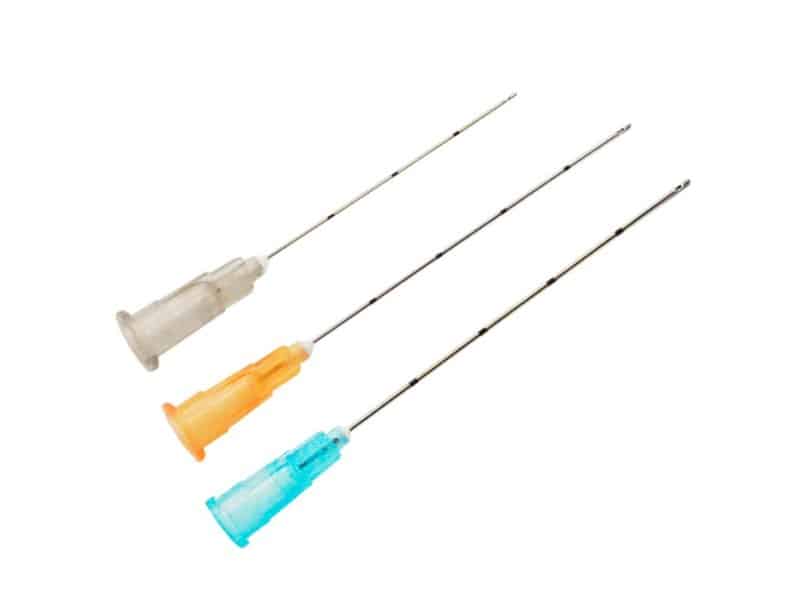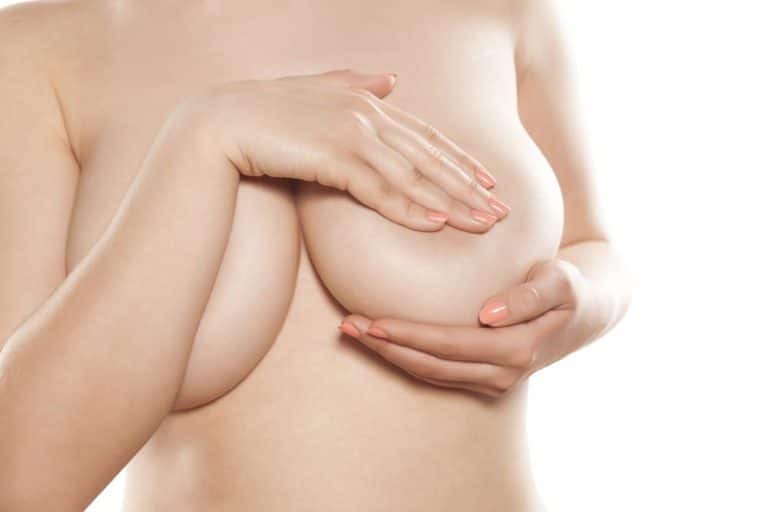Cannulas for Filler Procedures: Why You Should Consider Them
The role of cannulas in filler procedures is game-changing. They offer a safer, more precise way to deliver dermal fillers. Cannulas reduce the risk of bruising and swelling compared to traditional needles. This makes for a smoother recovery and better results. Patients enjoy less downtime, which is a huge plus. Plus, practitioners find that dermal filler needles and cannulas allow for greater control during the procedure with injectable filler for men. This leads to enhanced patient satisfaction and improved outcomes. Understanding how these tools work can help you make informed choices about your cosmetic treatments. Dive into the benefits of using cannulas and discover why they are becoming the go-to option in aesthetic practices today.
Key Takeaways
- Cannulas are a safer alternative to needles in filler procedures, reducing the risk of bruising and swelling.
- Choose cannulas for a more comfortable experience, as they often cause less pain and discomfort during injections.
- Understand the specific benefits of cannulas, such as their ability to cover larger areas with fewer entry points, leading to smoother results.
- When considering fillers, weigh the pros and cons of using cannulas versus needles based on your unique needs and preferences.
- Personalized techniques with cannulas can enhance outcomes, so consult with a qualified professional to tailor the approach to your facial structure.
- Expect effective results from cannula use, as they allow for precise placement of fillers while minimizing complications.
Understanding Cannulas in Filler Procedures
Definition of Cannulas
Cannulas are flexible, blunt-tip tools used in filler procedures. They differ from traditional needles because they have a rounded end, similar to those used for dermal filler. This design reduces the risk of damaging blood vessels and nerves during the dermal injection process. Cannulas allow for smoother and more controlled delivery of fillers.
Entry Point Creation
Before using a cannula, a sharp needle is employed to create an entry point. This step is crucial for the dermal filler injection procedure. The sharp needle punctures the skin, making it easier to insert the cannula. Once the entry point is established, the cannula slides into place.
Delivery of Fillers
Cannulas play a vital role in delivering fillers into desired areas. Their flexibility allows them to navigate through tissues without causing significant trauma. This feature enhances patient comfort during the dermal filler treatment procedure.
The blunt-tip design minimizes bruising and swelling compared to sharp needles. As a result, patients often experience less downtime after their facial filler treatment session.
Advantages of Using Cannulas
- Reduced Pain: Cannulas often cause less pain than needles.
- Lower Bruising Risk: They minimize bruising due to their design.
- Wider Area Coverage: Cannulas can treat larger areas with fewer entry points.
These benefits make cannulas popular among practitioners and patients alike.
Considerations for Practitioners
Practitioners must be skilled in using cannulas for effective results. They should understand facial anatomy well to avoid complications during dermal filler sessions. Proper training ensures safe and effective use of these tools.
In summary, understanding cannulas is essential for successful filler procedures. Their unique design offers numerous advantages over traditional needles, making them a preferred choice in cosmetic treatments.
Cannula vs Needle for Fillers
Blunt Tip Cannulas
Cannulas have a blunt tip, which makes them different from traditional needles. This design helps reduce the risk of bruising and damage to blood vessels. The blunt end pushes tissue aside rather than cutting through it. This technique allows for safer filler injections.
Cannulas can cover larger areas with fewer entry points. Fewer punctures mean less pain and discomfort for patients. Many practitioners prefer using cannulas for this reason. They can also help achieve a more even distribution of the filler.
Sharp Needles
Needles have a sharp point that can create an initial prick sensation. Some patients prefer this method because they feel it gives them more immediate results. The sharpness allows for precise placement of dermal fillers.
However, needles can cause more discomfort during the procedure. They may lead to increased swelling or bruising afterward. Patients often report feeling the quick sting of the needle but may not enjoy the aftereffects.
Insertion Techniques
The insertion techniques vary significantly between cannulas and needles. Cannulas require a small entry point, usually made with a needle first. After creating the opening, the cannula is gently inserted into the skin.
Needles are inserted directly into the skin without prior preparation. This method can be quicker but may result in more trauma to the tissue. Practitioners must choose their technique based on patient needs and desired outcomes.
Patient Experiences
Patient experiences differ widely based on whether they receive injections with cannulas or needles. Many patients report less pain with cannulas due to their design and technique. The process tends to be smoother, leading to a more comfortable experience overall.
On the other hand, some patients prefer needles because they are familiar with them. They might feel more confident in their effectiveness despite potential discomfort. Understanding these preferences helps practitioners provide better care tailored to individual needs.
Benefits of Using Cannulas
Reduced Bruising
Cannulas significantly lower the risk of bruising during filler procedures. Unlike needles, which can puncture blood vessels, cannulas glide over them. This gentle movement minimizes trauma to the skin and underlying structures. As a result, patients experience less swelling and discoloration after treatment. Many practitioners report fewer complications when using cannulas compared to traditional needles.
Patients often appreciate this aspect. They prefer procedures that lead to quicker recovery times and less visible side effects. The reduction in bruising makes cannulas an attractive choice for those seeking aesthetic enhancements.
Decreased Intravascular Occlusion Risk
Using cannulas also decreases the risk of intravascular occlusion. This condition occurs when filler enters a blood vessel, potentially causing serious complications. Cannulas allow for a more controlled injection technique. The flexible design helps avoid direct contact with blood vessels.
Studies indicate that the risk of occlusion is lower with cannula use. Practitioners can inject fillers into deeper layers of the skin while avoiding critical areas. This factor is crucial for safety during cosmetic procedures.
Suitable for Large Areas
Cannulas are particularly suitable for larger volume areas like the cheeks. These regions require more product than smaller areas such as lips or under-eye hollows. Cannulas can deliver larger amounts of filler efficiently.
The longer length and flexibility of cannulas make them ideal for these applications. They allow practitioners to cover more surface area without needing multiple entry points. This approach reduces discomfort for patients and streamlines the procedure.
Many professionals recommend using cannulas for cheek fillers specifically. The ability to distribute product evenly leads to better results. Patients enjoy a smoother appearance without lumps or unevenness.
Summary of Benefits
The benefits of using cannulas in filler procedures are clear:
- Reduced risk of bruising: Less trauma means fewer side effects.
- Decreased occlusion risk: Safer injections protect against complications.
- Efficiency in large areas: Ideal for cheeks and other expansive regions.
These advantages contribute to a growing preference among both practitioners and patients. As techniques evolve, many clinics adopt cannulas as their standard tool for filler procedures.
Reducing Discomfort with Cannulas
Unique Sensation
Patients often describe a unique sensation when cannulas advance under the skin. This feeling can vary among individuals. Some report a slight pressure or pushing sensation, while others may feel a bit of discomfort. The design of cannulas allows for smoother movement than traditional needles. This design aims to reduce trauma to the tissue.
The blunt tip of a cannula minimizes sharp sensations. It moves through the layers of skin and fat more gently. This reduces the likelihood of hitting nerves or blood vessels, which can cause pain. However, some patients still experience discomfort during the procedure.
Strategies for Minimizing Discomfort
Several strategies exist to help minimize discomfort during cannula procedures.
- Topical anesthetics: Applying a numbing cream before the procedure can significantly reduce sensations.
- Cold packs: Using cold packs on the treatment area prior to injections can numb the skin.
- Gentle technique: Practitioners should use slow and steady movements when inserting the cannula. Rapid movements can increase discomfort.
- Communication: Open discussions between practitioners and patients are essential. Patients should express their feelings during the procedure, allowing adjustments as needed.
- Post-procedure care: Following aftercare instructions helps manage any discomfort that might arise later.
These methods aim to create a more comfortable experience overall.
Patient Preferences
Patient preferences play an important role in how they perceive discomfort during cannula procedures. Many individuals prefer using cannulas over traditional needles due to their potential for less pain and bruising. However, personal experiences vary widely.
e patients may feel anxious about the procedure itself, contributing to their perception of discomfort. Others may have had previous negative experiences with fillers, influencing their expectations.
Understanding these preferences is crucial for practitioners. They can tailor their approach based on individual concerns. This personalization helps build trust and comfort.
In surveys, many patients reported that they felt less discomfort with cannulas compared to needles. Yet, some still worry about possible complications associated with filler procedures. Addressing these concerns upfront can help ease anxiety and improve overall satisfaction.
Lowering Risks with Cannulas
Vessel Punctures
Cannulas are designed to minimize risks during filler procedures. They have a blunt tip, unlike needles. This design helps prevent vessel punctures. Needles can easily penetrate blood vessels, leading to complications. Cannulas slide along the tissue planes. They navigate around vessels rather than through them. This significantly lowers the chance of hitting a blood vessel.
Studies show that using cannulas reduces the risk of vascular complications by up to 50%. Fewer vessel punctures mean less chance for serious issues. Patients often experience better outcomes because of this safety feature.
Vascular Complications
The role of cannulas is crucial in reducing vascular complications. These complications can include bruising, swelling, or even more severe issues like skin necrosis. Cannulas help avoid these problems by allowing for safer filler placement.
When fillers are injected with needles, they may inadvertently enter blood vessels. This can lead to blockages and serious side effects. Cannulas decrease this risk by offering a controlled method of injection. The technique allows practitioners to visualize their path better. This further ensures that they stay clear of major blood vessels.
Research indicates that practitioners who use cannulas report fewer adverse events during procedures. This reinforces the importance of choosing the right tool for filler injections.
Bruising Possibility
While cannulas lower risks, they do not eliminate them entirely. Bruising can still occur even when using cannulas. The blunt tip reduces trauma to the tissue, but it does not guarantee no bruising will happen.
Factors like individual anatomy and treatment area also contribute to bruising potential. Some patients may be more prone to bruising due to their skin type or medical history. Therefore, while cannulas enhance safety, they cannot promise complete immunity from bruising.
Practitioners should inform patients about these possibilities before procedures begin. Understanding the risks helps manage patient expectations and improves satisfaction.

When to Choose Cannulas
Larger Volumes
Cannulas are ideal for larger volume injections. They allow practitioners to deliver more filler with fewer entry points. This reduces the risk of complications. For example, when performing cheek augmentations or temple volumization, using a cannula can be beneficial. The single entry point minimizes trauma to the skin and surrounding tissues.
Practitioners often prefer cannulas in these scenarios because they can navigate through the tissue better. They can reach deeper areas without causing much damage. This results in a smoother, more even distribution of filler.
Deep Injections
For deep, linear injections, cannulas are highly recommended. Areas like the jawline require precision and depth. Cannulas provide this by allowing for controlled delivery of product along the desired contour. The flexibility of a cannula helps in achieving defined jawlines without excessive pressure.
Using a cannula for jaw definition reduces the chances of overfilling specific spots. It distributes the filler evenly, which is crucial for natural-looking results. Practitioners have found that patients experience less discomfort during these procedures when using cannulas.
Bruising Concerns
When practitioners need to exercise caution against bruising, cannulas become essential tools. They reduce the likelihood of hitting blood vessels compared to needles. Bruising is a common concern among patients receiving fillers. A single entry point from a cannula significantly lowers this risk.
In sensitive areas like under the eyes or around the lips, minimizing bruising is vital. Patients appreciate the reduced recovery time associated with less bruising. Practitioners who prioritize patient comfort often choose cannulas for these delicate procedures.
Personalized Techniques with Cannulas
Customized Procedures
Cannulas allow for personalized filler procedures. Each patient has unique facial features and aesthetic goals. Injectors can customize treatments based on individual needs. This flexibility enhances patient satisfaction. For instance, some patients may want subtle enhancements, while others seek dramatic changes.
Using a blunt tip cannula reduces the risk of bruising. This technique minimizes trauma to blood vessels during injections. Filler can be placed more precisely under the skin. Patients often experience less discomfort compared to sharp needle techniques.
Various Techniques
Different techniques exist for effective filler application using cannulas. The needle injection techniques vary based on the area being treated. For example, injectors might use a linear threading technique for cheek volume. This method allows for smooth product distribution along the contours of the face.
Another technique is the fanning method. It involves injecting filler in multiple directions from one entry point. This approach provides an even distribution across larger areas, like the cheeks or jawline. By adapting these methods, injectors achieve desired aesthetic outcomes efficiently.
Adaptability Across Areas
Cannulas show adaptability for various facial areas. They work well in delicate zones such as under the eyes and around the lips. In these regions, precision is crucial due to proximity to sensitive structures. The blunt tip design helps avoid vascular complications.
Injectors can also use cannulas effectively in larger areas like the cheeks and temples. Here, they can deliver more filler without multiple punctures. This reduces recovery time and improves overall comfort for patients.
Patients appreciate that these procedures are often quicker than traditional methods. The reduced number of injection sites leads to less swelling and bruising post-treatment. Many feel more confident after seeing their results sooner.
Benefits of Needleless Injections
Needleless injections are gaining popularity in cosmetic treatments. Cannulas represent a step towards this innovation by minimizing pain and anxiety associated with needles. Patients often report a better experience when using blunt tip needles compared to sharp ones.
The benefits extend beyond comfort alone. With fewer puncture wounds, there’s a lower chance of complications like infections or excessive swelling. This safety aspect is critical for both patients and injectors.
Expected Results with Cannulas
Realistic Outcomes
Cannulas can significantly improve the outcomes of filler procedures. Patients should have realistic expectations about their results. Cannulas allow for precise placement of fillers. This precision often leads to more even distribution under the skin.
Patients may notice fewer bumps and irregularities compared to traditional needles. The technique minimizes trauma to the surrounding tissues. This results in less swelling and bruising. Many patients appreciate this aspect, as it leads to a quicker recovery.
Smooth Results
Using cannulas often leads to smooth and natural-looking results. The blunt tip of a cannula reduces the risk of puncturing blood vessels. This factor decreases the chances of complications like bruising. As a result, patients enjoy a more comfortable experience.
The smooth application also allows for better blending of fillers. This blending helps create a more uniform appearance. Many practitioners report that patients are pleased with their natural look after using cannulas.
Timeframe for Effects
Visible results from filler procedures using cannulas typically appear almost immediately. However, some swelling may occur initially. This swelling usually subsides within a few days. Patients can expect their final results to become clear within two weeks.
Follow-up appointments are essential for evaluating outcomes. Practitioners can assess how well the filler settled and make adjustments if necessary. Some patients might require touch-ups after a few months, depending on their unique needs.
Considerations for Follow-Up
Patients should discuss follow-up care with their providers. Understanding what to expect after treatment is crucial. Providers may recommend avoiding certain activities post-procedure, such as strenuous exercise or exposure to extreme temperatures.
These precautions help ensure optimal results from the filler procedure. Communication between patients and practitioners is vital for achieving desired effects.
Closing Thoughts
Cannulas play a crucial role in filler procedures, offering advantages that enhance your experience and results. They reduce discomfort and minimize risks, making them a preferred choice for many practitioners. Understanding when and how to use cannulas can elevate your aesthetic journey, ensuring smoother applications and better outcomes.
As you consider your options for filler procedures, remember the benefits of cannulas. They provide precision and safety that needles may not match. If you’re ready to explore this innovative approach, consult with a qualified professional who understands your unique needs. Your beauty goals are within reach—don’t hesitate to take the next step!
Frequently Asked Questions
What is a cannula in filler procedures?
A cannula is a thin, flexible tube used to inject dermal fillers. It allows for smoother application and can navigate through tissue with less trauma compared to traditional needles.
How does a cannula differ from a needle?
Cannulas have a blunt tip, reducing the risk of piercing blood vessels. Needles are sharp and can cause more discomfort and bruising during filler procedures.
What are the benefits of using cannulas for fillers?
Cannulas minimize pain, reduce swelling, and lower the risk of bruising. They also allow for more precise placement of fillers, enhancing overall results.
Can cannulas help reduce discomfort during procedures?
Yes, cannulas can significantly decrease discomfort. Their design allows for gentler insertion, leading to a more comfortable experience for patients.
Are there risks associated with using cannulas?
While cannulas lower certain risks, complications can still occur. Proper technique and skilled practitioners are essential to minimize potential issues like bruising or swelling.
When should I choose a cannula over a needle?
Opt for a cannula when seeking less bruising and pain, especially in delicate areas like under the eyes or around the lips. Consult your practitioner for personalized recommendations.
What results can I expect with cannula use in filler treatments?
Using a cannula typically leads to smoother, more even results with less downtime. Patients often report greater satisfaction due to reduced side effects and improved aesthetic outcomes.






